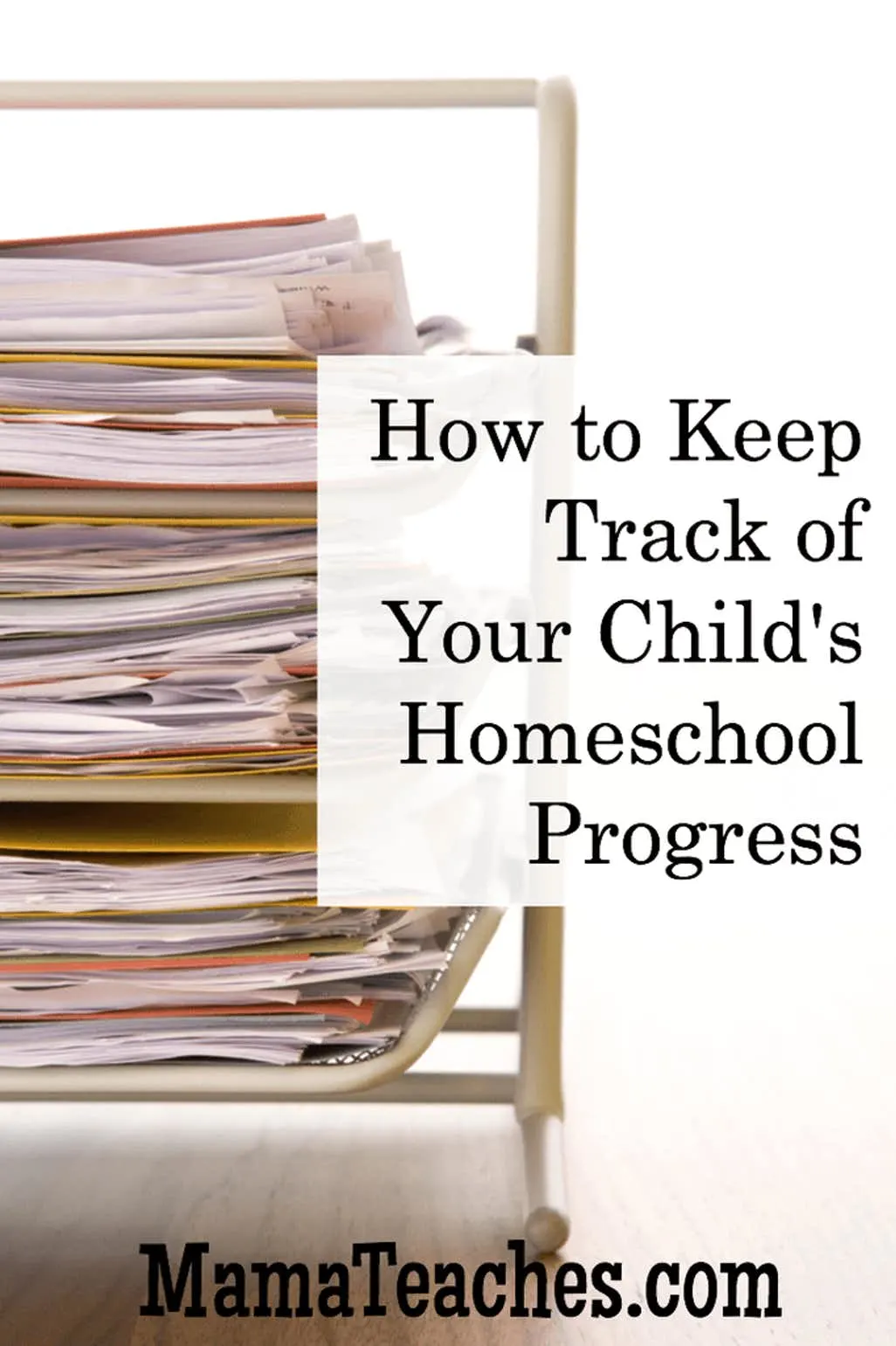Keeping track of homeschool progress is hard!
Here are three tips for keeping track of homeschool progress that are easy and efficient.

This article contains affiliate links to things that you might like.
One of the most daunting things about homeschooling, no matter how long you’ve been doing it, is keeping track of your child’s progress throughout the year.
Of course, you know that your child has made progress and done a great job, but proving that to an evaluator or the school district?
That’s a whole different story.
So, how do you keep track of their work, their progress, and the amazing strides they are making this school year?
Here are some tips that may help.
How to Keep Track of Homeschool Progress
1. WHAT DOES THE STATE SAY?
As much as you may not want to think about the laws of homeschooling in your state, it’s imperative that you understand them so that you can accurately keep track of your child’s homeschooling progress.
Search your state’s Department of Education website to find the homeschooling law or check out this handy link page from the Homeschool Legal Defense Association.
In some states, there is no reporting or tracking required (you lucky ducks!).
In others, a yearly portfolio, standardized testing, and a certified evaluator’s report is required.
By knowing what you have to submit to your school district at the end of the school year, you will have a better idea of what you need to keep track of throughout the year.
2. PORTFOLIOS
Once upon a time, portfolios were only in paper format. Homeschooling parents would save every last bit of work that their child did, ~~dump~~ organize it neatly in a binder, and submit it at the end of the year for review.
While many families still choose to do this, the homeschooling laws in most states do not stipulate how the portfolio should be done, just that they include samples of work to show adequate progress.
A great space-saving option is to create a digital portfolio.
This is what we do every year, because it’s so much easier.
I snap a photo of the kids’ work – worksheets, dioramas, paintings, reports, foldables, lapbooks, certificates from live classes, photos of them reading, on field trips, etc.
I then download the photos to my computer and organize them into a slide show that can be copied onto a thumb or flash drive and delivered to the evaluator and school district’s superintendent (or whoever gets your portfolio).
To showcase how well-rounded your homeschooling is, include a short clip of your child playing an instrument (counts for Music), participating in sports (counts for PE), or giving a speech at scouts (counts for Public Speaking).
Remember to check with your state’s laws before making the switch to a digital portfolio, and always have a copy of the law on-hand to back-up your decision to use an electronic alternative.
Mark a date on your calendar each month to update your portfolios, so that you’re not rushing at the end of the school year.
And, while that’s great advice, I have to admit that I tend to do the bulk of my updating over the Christmas holidays and then again in May.
3. BOOK TRACKING
In addition to submitting portfolios, many states want homeschoolers to submit a log of all of the books that they have read during the school year.
Obviously, the people who made the homeschooling laws have no idea just how easy it is to go through hundreds upon hundreds of books during the course of a school year.
If your state does not require that you create a log with dates that coincide to lessons, thank your lucky stars.
For those states that require you to provide detailed dates for each book, a simple spreadsheet that lists the book title, author, and dates used should suffice.
You can also use an app to scan the barcode of the books as you read them to create a virtual library list.
Again, the importance of knowing the homeschool law in your state cannot be emphasized enough.
Don’t spend your precious time doing more than you need to, but also be prepared so that you’re not scrambling for documentation at the end of the school year.
Most of all, remember to have fun, use each day as a learning opportunity, and cover yourself in terms of documentation and progress checks.
Snap photos of everything, have a designated folder for completed work, and know the law.
Homeschooling is a lot of work, but it is so worth it!
